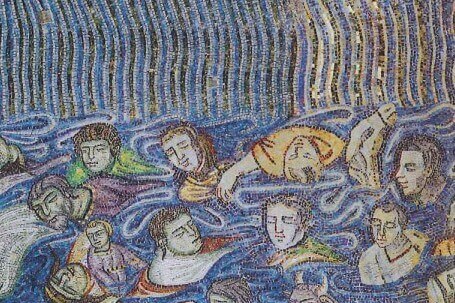By Vivian Hurtado

Vivian Hurtado | 21 years old
-Undergraduate student of Environmental
Engineering at URL
-Passionate environmentalist and researcher by
vocation. I am interested in environmental
education to promote the protection of nature and to recover our sensitivity towards it. Self-taught.
As a matter of fact, the climate crisis has been a concern of the scientific community since the 1950s, when terms such as the greenhouse effect, CO2 emissions and ozone layer erosion emerged. As the concentrations of carbon dioxide in the atmosphere increased to the point of becoming a worldwide concern, governments were asked to commit themselves to take action through different agreements, among the most important ones are the Stockholm Declaration in 1972 – where climate change was taken into account for the first time, as well as measures for the conservation and improvement of the environment – and the Kyoto Protocol in 1997, whose aim was to reduce by 5% the world’s total greenhouse gas emissions. New international agreements continue to emerge over the years, of which the most recent is the Paris Climate Agreement, a global strategy to deal with climate change issues going beyond 2020 (Jackson, n.d.).
Warnings have been issued for decades about the consequences of human activities on the global climate balance. Future catastrophic scenarios have been simulated, charts have been produced to support them, forums for dialogue have been created to suggest strategies and objectives to halt the deterioration of the environment, but perhaps we should start by learning about our history to understand the magnitude of the problem and the future that awaits us if things remain as they are. Is this the first time we are facing climate change? Although it is true that in fact, this is the first time mankind is generating an exuberant amount of greenhouse gases that are fueling the climate crisis, it is by no means the first time we are dealing with one, whether it is caused by man, nature itself or a combination of both.
Ancient civilizations Climatic fluctuation has been referred to as one of the main factors in the collapse of Maya civilization during the Terminal Classic Period (Luzzadder-Beach et al. 2016). Frequent droughts and storms have been reported by archaeologists at Xcoch in the Puuc region of the Yucatán during the Terminal Classic Period. Due to the existence of hydraulic systems meant to both harvest and retain water for production of large deposits, smaller tanks, canal systems, and chultuns, all built for the purpose of storing large quantities of rainwater for domestic consumption and irrigation (Smyth et al, 2017).
In El Mirador Basin, northern Petén, evidence of environmental change has also been suggested. In pre-classic periods, it appears that the bajos were wet swamps. In fact, fossil remains of the wet swamps of the area are still found in the lowlands of the Mirador Basin, where archaeological excavations and research with different analysis have shown that the early Maya took advantage of the rich lacustrine resources of the swamps to supply themselves. They transported enormous quantities of mud from the swamps to establish agricultural terraces. All this provoked the loss of forest and floods that coincided with the abandonment of the sites at the end of the Late Preclassic (ca. 150 A.D.) (Hansen et al, 2002).
Something similar happened in the city of Kaminaljuyu, considered the most important trade center in the Guatemala highlands with an area of 5 km2 around the Miraflores Lagoon, which no longer exists today. The Late Preclassic period (400 BC-200 AD) was its greatest demographic, economic, social, architectural and artistic peak, so many buildings and monuments were constructed, in addition to a series of large hydraulic canals used to carry water from the Miraflores Lagoon to the fields. Excavations at San Jorge revealed not only a large irrigation canal, but also evidence of an intensive agricultural system that exploited the lagoon’s aquatic resources during the Late Preclassic period (Popenoe de Hatch 1997). As a result, the lagoon dried up during the Early Classic period (200-550 AD) and consequently, the city experienced a crisis due to the difficulty of continuing the agricultural system through irrigation. Hence began a decline at the location and a decrease in population (Ministry of Culture and Sports, n.d.).
Regarding the Nazca culture, a civilization that was located more than 2,000 years ago throughout part of the southern coast and the interior of Peru, also experienced climatic fluctuations due to its intense agricultural activity and deforestation. A research project showed that an intense and abnormal El Niño phenomenon caused floods that destroyed crops and the events were aggravated by the felling of the forests around the river, since they functioned as a natural barrier to the rising currents. It is known that this civilization was very advanced as they had hydraulic and cultivation technology, but these same models and developments caused its collapse (Vegas, 2019)
Middle Ages
On the other hand, between 700 and 1,300 A.D. in Europe there was the so-called “Medieval Warm Period” where agriculture flourished in places like Greenland according to the research of the climatologist Hubert H. Lamb (Fernandez, 2009) – is it a coincidence that its name in English is “Greenland”? During this period, high temperatures benefited agriculture and with it, population growth. But, population growth and economic activity led to excessive deforestation as farmlands and pastures were developed, as well as the construction of cathedrals, houses, ships, mills, among others. Although this was a “warm” period, the climate was not uniform but rather highly volatile, with relatively cold winters and an increase in the frequency of precipitation. The heat melted the ice caps and prompted a considerable rise in sea level, which simultaneously caused terrible flooding for several years that killed an estimated 50,000 people in the year 1,287 as well as 25,000 in the year 1,362. On the contrary, other areas were severely hit by droughts. The effects were also felt in areas of America, India, northern China, southern Sahara, the Nile Valley and East Africa (Alberola, n.d.).
Subsequently, rainfall continued and chroniclers spoke of a new “universal flood”. Winters were increasingly intense, temperatures dropped between 2 and 3 degrees below normal and, although it may not seem significant, it was enough to form a ” Little Ice Age” from the year 1,300 to 1,850 approximately, named this way because 30% of the planet was covered with ice. Consequences were catastrophic, given that crops were destroyed causing a severe famine in Northern and Central Europe, among the years 1,361 to 1,371 were 101 famines in France and during the year 1,601 a famine killed 500,000 people in Russia. Thousands of animals also died (we could imagine that many species became extinct) causing a lack of fertilizer and affected agricultural work, aggravating the lack of food. The causes are still uncertain, but one of the hypotheses suggests that solar radiation was reduced by volcanic activities, since eruption gases can create scattered clouds that reflect the sun’s rays and return them to space, preventing the heat from reaching the Earth; this, combined with the aforementioned background, influenced the climatic fluctuations (Alberola, n.d.). To
understand it better you can look at the following graph No. 1:
Graph No. 1 Timeline of the Medieval Warm Period and the Little Ice Age.

By studying these events, we can learn how weather and climate dynamics work and the consequences that an imbalance can bring to our planet. Now more than ever we must look at our history: have we learned from our ancestors or are we just making the same mistakes and finding new ways to destroy the environment? It is true, we urgently need to make changes in our economic, political and social systems, but those big systemic changes are also the sum of all our small actions!
REFERENCES:
Alberola A. (s.f.). El largo verano de la Edad Media. El Cambio Climático Medieval. Recuperado de: https://www.divulgameteo.es/fotos/lecturas/CC-Medieval-Alberola.pdf
Archibald, D. & Ferreyra, E. (2018) El Pasado y el Futuro del Clima. El Hemisferio Sur se Enfría. Recuperado de: http://www.mitosyfraudes.org/Calen7/Solar23.html
Barrientos Q., Tomás (2000) Kaminaljuyu: ¿Una sociedad hidráulica? En XIII Simposio de Investigaciones Arqueológicas en Guatemala, 1999 (editado por J.P. Laporte, H. Escobedo, B. Arroyo y A.C. de Suasnávar), pp.21-41. Museo Nacional de Arqueología y Etnología, Guatemala (versión digital).
Fernández, A. (2009) El cambio climático también ocurrió en el pasado. Recuperado de: https://www.consumer.es/medio-ambiente/el-cambio-climatico-tambien-ocurrio-en-el-pasado.html
Jackson, P. (s.f.). De Estocolmo a Kyoto: Breve historia del cambio climático. Recuperado de: https://www.un.org/es/chronicle/article/de-estocolmo-kyotobreve-historia-del-cambio-climatico
Ministerio de Cultura y Deporte (s.f.). Kaminaljuyu. Recuperado de: http://mcd.gob.gt/kaminal-juyu/
Smyth, M. P., Dunning, N. P., Weaver, E. M., Van Beynen, P. & Ortegón, D. (2017). The perfect storm: climate and ancient Maya response in the Puuc Hills region of Yucatán. Antiquity 91 356: 490-509. Recuperado de: https://pdfs.semanticscholar.org/be03/a97e9641136b902a1ad5183ea33c6ee03428.pdf
Vegas, J. (2019). ¿Cuántos cambios climáticos ha habido en la historia. Recuperado de: https://www.clima.com/noticias/cuantos-cambios-climaticos-ha-habido-en-la-historia
Documentary: La Pequeña Edad de Hielo
